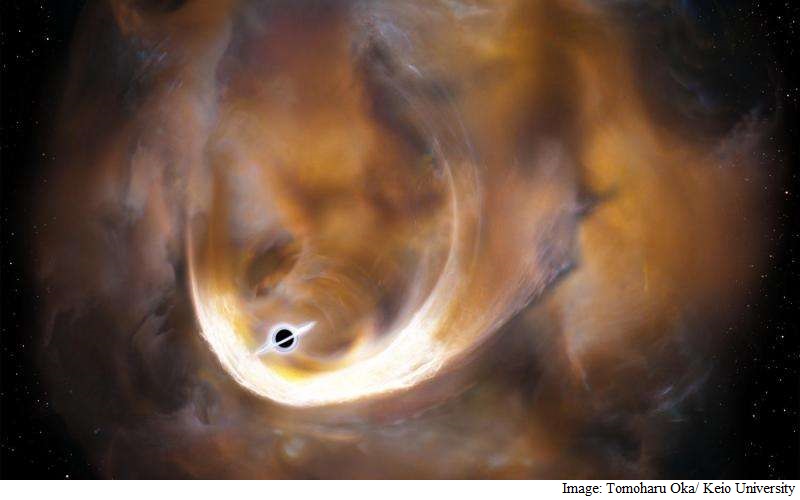Second Largest' Black Hole in the Milky Way Discovered

A team of Japanese astronomers has discovered an enigmatic gas cloud just 200 light years away from the centre of the Milky Way that can be the possible missing link in the black hole evolution.
This may be the first detection of an intermediate mass black hole (IMBH).
Astronomers already know about two sizes of black holes: stellar-mass black holes, formed after the gigantic explosions of very massive stars and supermassive black holes (SMBH) often found at the centres of galaxies.
The mass of SMBH ranges from several million to billions of times the mass of the Sun.
What makes the gas cloud named "CO-0.40-0.22" unusual is its surprisingly wide velocity dispersion.
The cloud contains gas with a very wide range of speeds.
The team found this mysterious feature with two radio telescopes, the Nobeyama 45-m Telescope in Japan and the ASTE Telescope in Chile both operated by the National Astronomical Observatory of Japan.
The team performed a simple simulation of gas clouds flung by a strong gravity source.
They found that a model using a gravity source with 100 thousand times the mass of the Sun inside an area with a radius of 0.3 light years provided the best fit to the observed data.
"Considering the fact that no compact objects are seen in X-ray or infrared observations, this, as far as we know, the best candidate for the compact massive object is a black hole," said lead researcher Tomoharu Oka, professor at Keio University in Japan in a paper that appeared in the Astrophysical Journal Letters.
If the cloud CO-0.40-0.22 contains an intermediate mass black hole, it might support the intermediate mass black hole merger scenario of SMBH evolution.
A recent study suggested that there are 100 million black holes in the Milky Way Galaxy but X-ray observations have only found dozens so far.
Most of the black holes may be "dark" and very difficult to see directly at any wavelength.
"Investigations of gas motion with radio telescopes may provide a complementary way to search for dark black holes," Oka added.
No comments:
Post a Comment